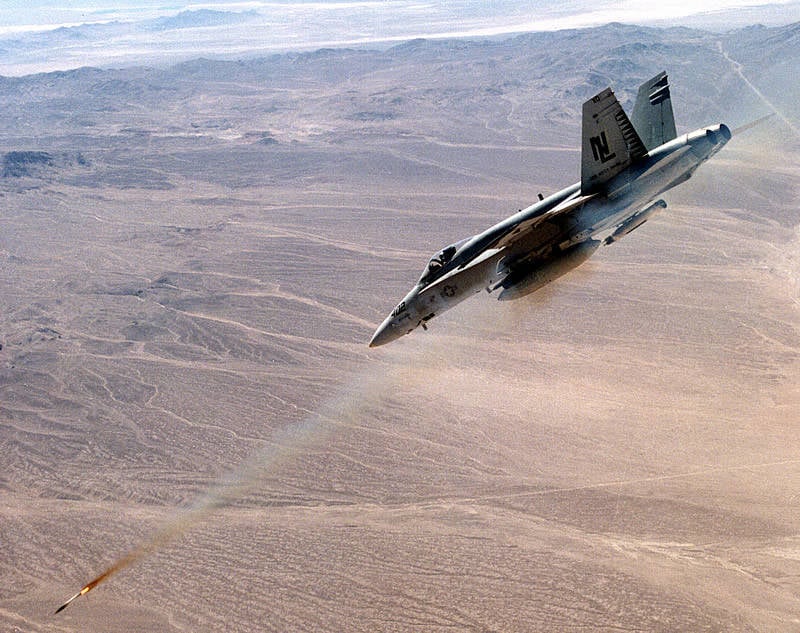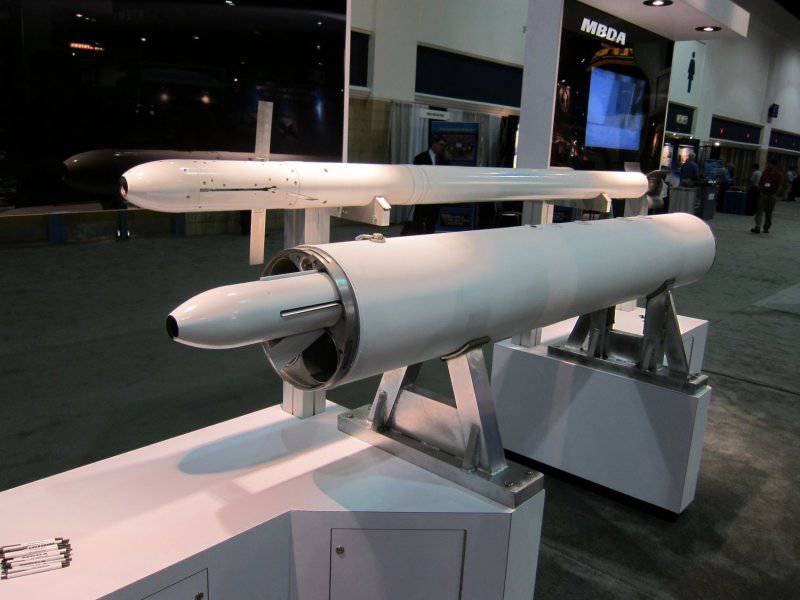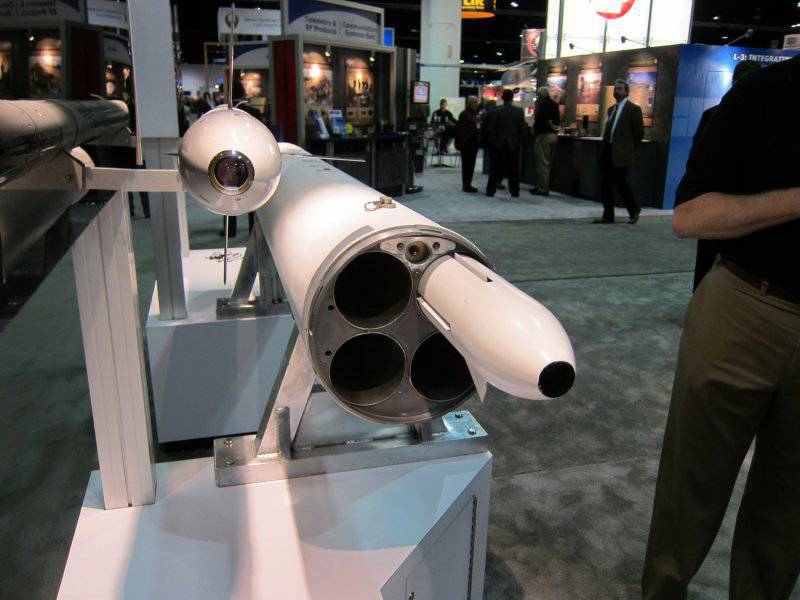Guided missile Laser-Guided Zuni Rocket (USA)

Since 2006, the American branch of MBDA has proactively led the development of the Laser-Guided Zuni Rocket project (“Zuni Laser Guided Missile”), the aim of which is to create a promising small-sized missile for arming the Air Force, aviation and aviation KMP. Over time, the US Navy Aviation Combat Center joined the project. In order to simplify the development of a promising product, the existing unguided munition, the Mk 71 Zuni missile, was taken as the basis for the new guided missile.
The Zuni unguided rocket has a caliber of 5 inches (127 mm) and a total length of 2 m. The solid propellant engine used provides the rocket with a maximum speed of about 2600 km / h and allows hitting targets at a distance of 8 km. The unguided missile Mk 71 is equipped with a high-explosive fragmentation warhead weighing 40 pounds (18,15 kg). Rocket stabilization in flight is provided by rotation. After exiting the starting device, the rocket opens tail stabilizers mounted at an angle to its longitudinal axis.
Rocket Zuni is a typical representative of its class. Since the end of the fifties, various modifications of this munition have been used by American military aircraft to attack ground targets. Since Zuni is very popular, the authors of the Laser-Guided Zuni Rocket project decided to build a new guided missile based on it.
The essence of the project Laser-Guided Zuni Rocket is to use a set of special equipment designed for installation on a basic unguided rocket. After such a simple upgrade (a set of equipment can be mounted in the troops), an unguided rocket becomes controllable and can be used to deliver high-precision strikes against enemy targets. It was assumed that in this way the issue of equipping naval and naval aviation aviation with relatively inexpensive ammunition with high accuracy of hits could be resolved.
Such a guided munition architecture has already been tested in a JDAM project. In the course of this project, a set of equipment was developed, designed to be installed on unguided bombs and “turning” them into controllable bombs. JDAM control system bombs were actively used by the United States Air Force and the United States Naval Aviation during recent conflicts. It is necessary to note the difference between the two systems. The JDAM kit uses inertial aiming and satellite navigation, while the Laser-Guided Zuni Rocket rocket finds a target using laser guidance.
The initially laser-guided Zuni Rocket guided missile was developed only by MBDA and the Naval Aviation Combat Center. Over time, a number of other organizations joined the work. This company General Dynamics, Honeywell and the US branch of the Israeli Elbit Systems, responsible for the various components of the guidance system.
The main idea of the Laser-Guided Zuni Rocket project is to equip an unguided rocket with a WGU-58 / B control system. This system is implemented as a module mounted on the head of the unguided ammunition. The module is equipped with a laser guidance system and mechanisms to control the flight of the rocket. There is a laser receiver at the head of the WGU-58 / B system, and an X-shaped handlebars in the tail section. The controlled version of the Zuni rocket is transported with folded rudders and, in this form, is placed in the starting device. After exiting the guide pipe, the rudders unfold and are used for flight control.
After equipping the control unit, the Zuni rocket is heavy to 150 pounds (68 kg) and lengthened to 118 inches (2,8 m). At the same time, the other characteristics of the ammunition remain the same. The rocket is still able to reach speeds of up to 2500-2600 km / h and hit targets at ranges of the order of 8 km.
A launcher LAU-10 is available for use with Laser-Guided Zuni Rocket missiles. This unit has four tubular guides into which the rockets are placed. On the outer surface of the device there are mounts for hanging on the pylons of airplanes or helicopters, as well as connectors for connecting to onboard systems.
According to the method of application, the guided missile of the Laser-Guided Zuni Rocket is to some extent similar to its unguided predecessor. Ground units or reconnaissance UAVs must find the attacked target and highlight it with a laser. The rocket carrier enters the launch area and captures the marked target. Next comes the launch of the rocket, which with the help of the WGU-58 / B control system finds and hits the target. According to some reports, the circular deviation of the rocket does not exceed 1,5-2 meters.
Laser-Guided Zuni Rocket missiles can be any modern US aircraft that can use unguided weapon. These can be the AV-8B Harrier and A-10 Thunderbolt fighter planes, the F / A-18 Hornet carrier-based fighters or the F / A-18E / F Super Hornet fighter jets. If necessary, other aircraft can be carriers of new-model guided missiles.
In terms of tactics of use, the Zuni controlled version of the ammunition should complement the existing AGM-165 Maverick missiles, which have a significantly longer range and carry a heavier warhead. In some conditions, the Laser-Guided Zuni Rocket is a more convenient means of destruction, since four missiles can be transported at once on one pylon of the aircraft instead of one, and the power of the AGM-165 warhead may be excessive to destroy some targets.
By the end of the last decade, the companies participating in the project completed design works and preliminary tests. In 2009, the first test launches took place, during which rocket prototypes successfully hit conventional targets. Shooting was conducted both on stationary and moving objects. In September, 2010, the first launch of the Laser-Guided Zuni Rocket, equipped with a warhead, took place. According to the test results, a certain refinement was carried out, after which a new rocket was offered to customers.
Managed version of the Zuni rocket over the past few years has been demonstrated at various exhibitions and has attracted the attention of specialists. However, the procurement of such weapons has not yet been reported. The Laser-Guided Zuni Rocket rocket and the WGU-58 / B control system have not yet replenished the arsenals of the armed forces of the United States or other countries using unguided Zuni ammunition.
On the materials of the sites:
http://mbda-systems.com/
http://mbdainc.com/
http://otvaga2004.ru/
http://designation-systems.net/



Information